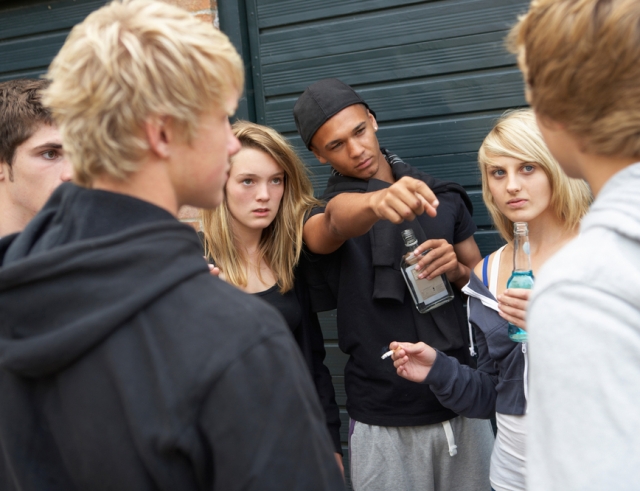Taking Bullying Seriously

Adam Strom, Director of Content, Research and Development, Facing History and Ourselves
The details of bullying stories are familiar to many of us. A passed note. A misunderstanding. Rumors. Cliques. Followers. Bystanders. Teasing and harassment.
Headlines and news reports for much of the last year have focused a spotlight on bullying and the impact it has on young people. In the last year alone, various media have documented several incidents where children, as young as 11, have committed suicide as a result of bullying. In this time of heightened awareness, forty-four states have passed anti-bullying laws. But is legislation enough? What will happen when these stories are no longer in the headlines? One recent study reported that 30 percent of children in grades 6-10 were either bullied or a bully themselves. How can we turn this around?
As part of a Carnegie Foundation project on violence in schools, we sent a researcher to observe a Facing History and Ourselves class at a middle school in New England. The researcher was there to document students' moral reflections on the history they were learning. As she interviewed the students, a hidden curriculum was revealed. The middle schoolers were engaged in the class' historical content, but they were also connecting the curriculum to their own lives. The Facing History class provided a rare outlet for students to apply the themes from their academic learning to their world.
In private interviews, nearly all the students recounted a particularly traumatic incident from the previous school year where one middle school argument among five girls escalated into a serious situation. Connecting themes of power, hatred, shame, and humiliation from their study of history, students wondered how a popular girl in their class went from being a member of the "in" group to the target of relentless bullying and ostracism.
When we shared our findings with researchers, parents, teachers, and students, nearly everyone had a similar story but few people knew what they could do to help. In fact, the researcher found that just about every attempt by adults-teachers, parents, and experts-to intervene in the case the students discussed only made the problem worse.
What role can young people and adults play to help to prevent incidents of bullying? How should they respond when bullying happens? And, what kind of choices help create and sustain schools that are safe for everyone? We turned our interviews with students, psychologists, and educators into our new online resource, Bullying: A Case Study in Ostracism, to explore those questions. Our website facinghistory.org/bullying shares details of this middle school story, including interview excerpts from the students involved, and more than 30 video clips of psychologists and educators who address the incident and larger issues the case raises.
As we reviewed the website with Thabiti Brown, principal of Codman Academy, a highly acclaimed public high school in Boston, he told us "I would have loved to have had this case in my hands when I was dealing with young ladies last year who were going through this same scenario....I think it's essential." Indeed, we all need tools we can use to raise these often difficult issues.
According to a recent National Education Association study, 40 percent of teachers believe that bullying is a moderate to major problem in their schools. Sixty-two percent of those same teachers reported that they witnessed two or more bullying incidents in the last month. With data like that, you might get the impression that there is little that can be done and that surviving bullying is a rite of passage. Dismissing bullying as "just the stuff kids do" is part of the problem. Too often it takes an extreme case to galvanize attention. Yet, even the less dramatic cases ripple throughout school communities, impacting not just how students feel but their academic achievement as well.
At the recent White House Conference on Bullying President Obama explained:
Bullying can have destructive consequences for our young people. And it's not something we have to accept. As parents and students, teachers and communities, we can take steps that will help prevent bullying and create a climate in our schools in which all of our children can feel safe.
The good news is that when teachers and administrators find a way to address these issues in a thoughtful way, it changes the lives of students and the climate in a school. Facing History and Ourselves has demonstrated that students can face these issues, reflect on their own behavior, and carefully consider the range of thoughtful responses. In a recent survey of Facing History students, 90 percent of them reported that Facing History has made them want to help when they see something happening that they think is wrong. Bullying: A Case Study in Ostracism is a resource to help students, teachers, administrators, and parents reflect on what they can do to make a difference and how their choices can help support safe schools.

